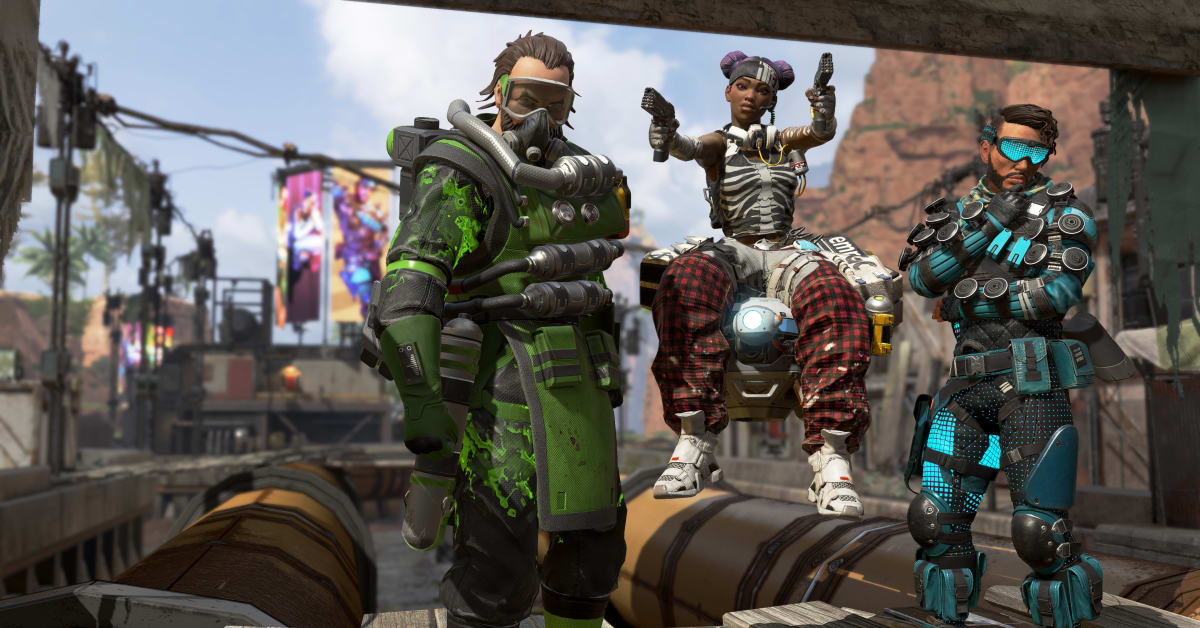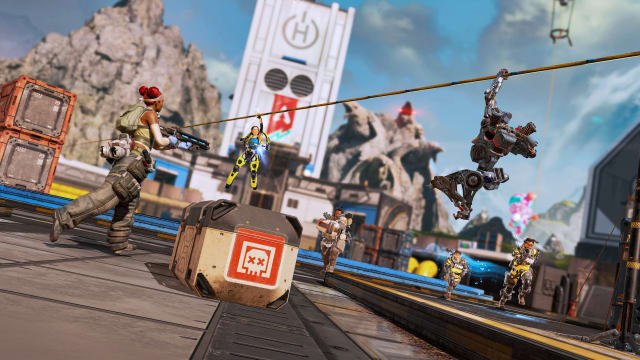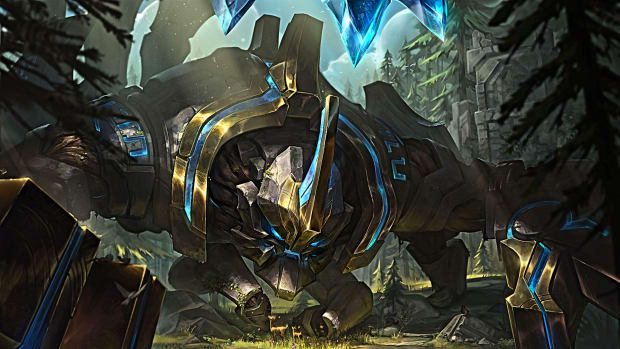
The making of Apex Legends: wall-running, titans, and legend cooldowns
Before Apex Legends found its feet, early prototypes saw the game’s developers wall-running around large, boxy maps. It worked for Titanfall 2, but this freeform movement soon got scaled back to fit a game without respawns. When a single life matters, it’s not much fun when death can come from almost any angle. Add on the fact that advanced players could reach almost anywhere on the battlefield, using a mixture of wall-running and infinite wall climbs – fine for linear Titanfall 2 maps, but migraine-inducing chaos in an open play space.
“It was engaging, but the counterplay was often impossible,” animation director Moy Parra explains. “So many things that could have been super fun to watch or play were not necessarily the best for the game.”
“I’m being a bit of a mouthpiece because my understanding of it comes from our previous design director, Jason McCord,” narrative lead Ashley Reed adds. “Titanfall 2 was amazing, but most people play it in small chunks, which is not great for longevity. There needs to be some downtime, and the ability to reliably predict where someone will be.”
On top of those concerns, the skill ceiling just wasn’t scaleable for some players – even with those parkour skills. A small percentage would master this movement and overpower everyone else, leading to less competitive matcFReshes.
It was also extremely situational in the more open maps of a battle royale game. Sure, you could hop between rooftops in some of the named locations, but what do you do when crossing the large swathes of empty land in between? To address this, Respawn built upon Titanfall 2’s knee-sliding to allow players to speed up and keep momentum whenever faced with a decline in the terrain.
Sliding adds a lot of nuance to Apex Legends, allowing you to build up speed and even carry momentum into jumps for daring escapes, or chain slides together across rough terrain. But importantly, players aren’t almost impossible to track or predict in this state - they’re fast, but they’re generally heading in a straight line.
Advanced players master the game’s physics in combination with legend abilities, such as Pathfinder’s grapple, to yank and bounce their way across vast distances, while people who pick up the game can immediately wrap their brains around hopping and crouching to build up basic momentum.
Originally, though, some characters had all of the advantages. In early versions of the game, Pathfinder could Spider-Man his way across the map while barely touching the floor.
“There was a version where Pathfinder had unlimited grapple,” Parra says. “We’re like, ‘Oh, no, this is gonna break everything’. So cooldowns were introduced. I can’t even imagine how that was ever out of the question.”
It took vigorous testing to find the sweet spot between movement abilities, legend abilities, and the topography of the maps before Respawn landed on that Apex feel.
“I remember when we started to introduce these huge areas in King’s Canyon, sliding was just such a fun thing to do,” Parra explains. “Especially if you could get some kills on your way down. That always made you feel so powerful. I don’t think that was ever at risk of being removed.”
Unlike robots. Robots were removed. Early on in development, many of King’s Canyon’s points of interest had larger entry points, as the team wrangled with the idea of letting players use titans – Titanfall 2’s hulking, mechanized killing machines.
“We were seeing if a titan would work in this situation,” Parra says. “So some of the maps were constructed like this. And then, as they were removed, they had to they had to be adjusted to [fit] soldiers on the ground. ‘Points of entry’ was something that McCord used to talk about all the time; how do we make a visual target viable from each line of sight?”
The developers would think and test and think and test, and then the players come in and they break it all apart.
There’s often a fine line between exploits and mechanics. Certain game genres, such as immersive sims, are built with exploits in mind, giving players various tools that can interact with each other in surprising ways that even the developers didn’t consider. In a multiplayer game, these often become unintended exploits that need patching out, such as players finding ways to glitch their way through geometry.
However, some exploits get lucky and earn the coveted “it’s not a bug, it’s a feature” designation. Much of Apex Legends’ high-level movement sits firmly in this category, where players have mastered the physics and nuances of the animations to twist the systems to their will. It might not have wall running, but skilled players can jump into walls and wall bounce off them in another direction, and some even twist legend abilities to become movement gods. None of this was intended, but it adds to the experience.
“The designers see this stuff online,” Parra says. “And just because there’s some sort of craziness that can be done, it doesn’t necessarily mean that it’s immediately bad.”
Rat spots – areas of the map where players can tuck and hide away – aren’t really in the grey area, however. Through the many updates across 20 seasons, the developers have done their best to not only plug these hidey-holes but also to encourage players to shoot and loot instead of hide and scoot. Season 20 will be the culmination of those efforts, forcing players to fight to get stronger shields and limiting what can be acquired from replicator crafting machines.
“I do think there’s a place for the people who are not the best shot in the world,” Reed says. “But I think what we want is to make it more compelling for them to play the more utilitarian characters. I remember winning a match by playing as Crypto and just zooming around with my drone. I was the one who originally asked for us to add assists to the banners because I was playing a lot of Crypto and I was getting like 15 assists, but randos would see I got no kills – I contributed. So I asked for us to acknowledge how different people play.”
However you play, there’s no better time to jump in. Apex Legends is celebrating its fifth anniversary with Season 20, which resets the clock on Ranked completely and changes how the core experience flows. Just be prepared to get stomped by wall-bouncing try-hards for the first week or so. No titans, mind.









